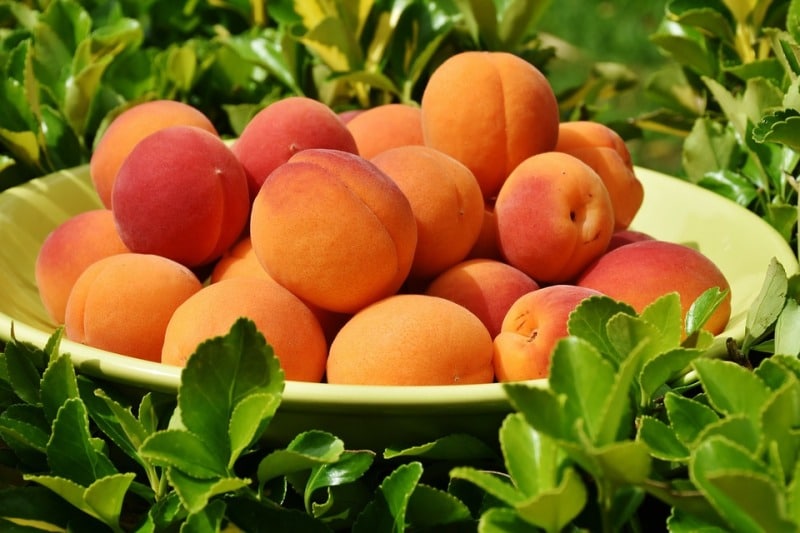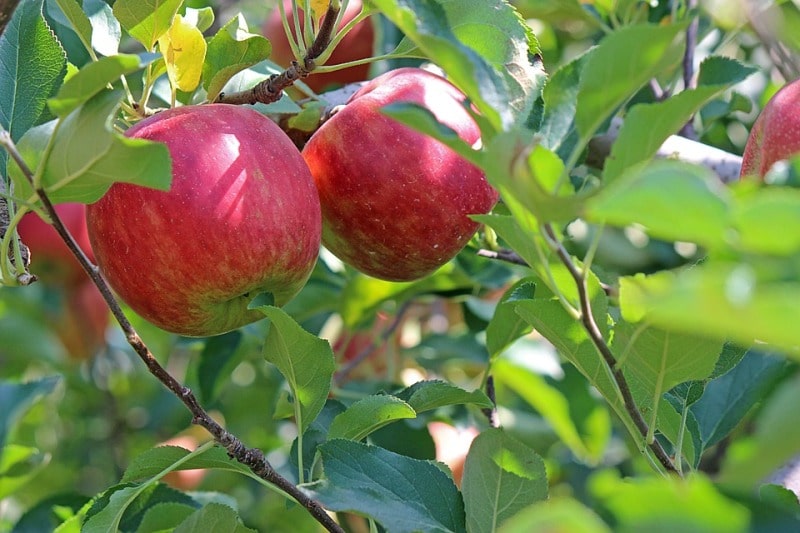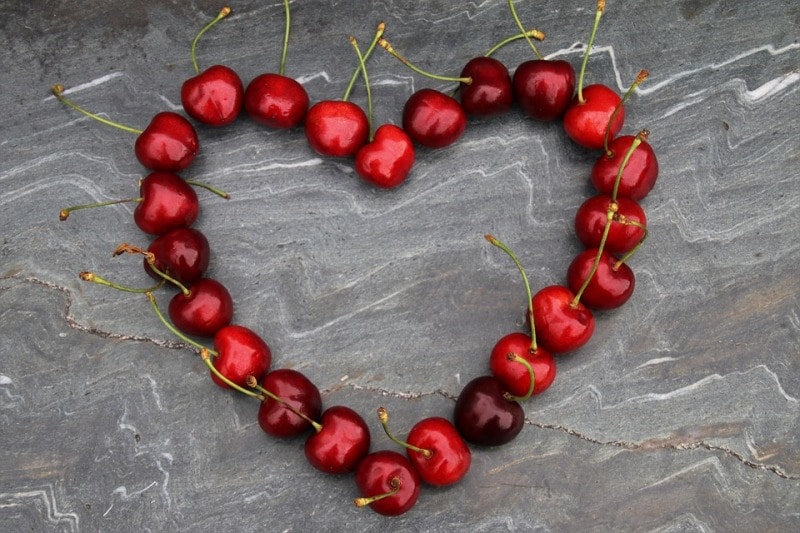Organic fruit farming, painting, care, harvesting
A step by step guide for organic fruit farming in India, business plan for maximum profits in organic fruit cultivation. We also cover organic fruit plant care and harvesting procedure.
Organic fruit farming is the practice of growing crops without the use of synthetic pesticides, herbicides, and fertilizers. Rather, it relies mostly on crop rotation, use of crop residues by soil incorporation of cover crops, and biomass recycling such as composting, animal integration, and biofertilizers to keep soil healthy without disturbing the ecological environment to obtain sustainably high yields.

The principal methods of organic farming contain crop rotation, green manures and compost, biological pest control, and mechanical cultivation.
Organic fruit production essentially excludes the use of several inputs associated with modern farming, most notably synthetic pesticides and fertilizers. Generally, organic fruit farming systems rely upon many factors they are crop rotations, crop residues, animal manures, green manures, legumes, off-farm organic wastes, mineral-bearing rock powders, and biological pest control. These all several components maintain soil productivity and tilth, supply plant nutrients and help to control insects, weeds and other pests.
Site selection for Organic fruit farming:
All fruit trees, like most crops, respond to good soil with vigor and productivity. Trees can successfully produce economic yields on hillsides, rocky soils, and other sites not appropriate for frequent tillage. Look carefully at the site and take stock of its soil, slope, and aspect, water infiltration and drainage, frost patterns, maximum temperatures and minimum temperatures, length of growing season, distribution of annual precipitation, availability of water for irrigation, proximity of the water table, and wind and air circulation patterns. Most of these are beyond your control, and planting plan must suit the natural conditions of the site. While farmers can be able to improve the soil over time, they cannot modify the subsoil layers, influence the prevailing wind, or modify temperatures to any significant extent.
Organic fruit farming site preparation:
- Site preparation is a very important way towards reducing weed and disease problems and assuring a vital planting through soil improvement.
- In general, fruit crops do not need highly fertile soils for good production. Highly fertile soils, rich in nitrogen, can promote too much vegetative growth at the expense of fruiting. A nutritionally balanced soil, proper soil pH level and plentiful amounts of organic matter are the fundamentals of an organic fertility management plan for fruits.
- Preplant soil improvement for organic fruit plantings is normally accomplished through some combination of cover cropping or green manuring and the use of imported materials, which may include manures, compost, rock powders, and organic wastes.
- The need for lime or sulfur is dependent on the fruit crop to be grown and the results of soil testing. Adjusting the soil pH level with lime (to raise the pH) or sulfur (to lower pH) is much more easily done before planting.
- Most fruit plants pH level performs best around 6.5, although they tolerate a pH range between 5.5 and 7.2. At this pH level Blueberries is an exception. They require an acid oil-ideally pH level of 4.8 to 5.2. The soil testing should be used to guide applications of manures and other rock powders to avoid nutrient imbalances.
- Cover crops and green manures not only contribute to soil fertility but can become part of an action plan for pre-plant weed suppression as smother crops. The essential strategy begins with plowing under sod or other existing vegetation, planting a cover crop to suppress weed growth, tilling under the cover crop and setting plants. Sometimes several crop rotations of cover crops are used before setting plants.
You may also check Chilli Farming Profit, Cost, Project Report.
Fruit crop and variety selection for organic farming:
Because fruit trees are perennial and represent a considerable investment of both time and money, it is important to start by planting with the optimum varieties for your location and intended markets. Fruit species and varieties are available from Cooperative Extension, nurseries, and other local growers.

Environmental constraints such as climate, presence of certain pests and diseases, suitable soils, etc can greatly impact the suitability of a given site or even a bioregion for organic production of a fruit crop. Generally, some perennial fruits are easier to grow organically than others. The small fruits (berries) for example, seem easier to produce organically than the tree fruits in almost all locations. Lastly, successful organic fruit growing can depend largely on whether the venture is for home production or commercial sales.
Soil fertility requirement for fruit plants
Soil and soil fertility constitute the center of the natural ecosystem. A more or less permanent soil cover prevents soil erosion and which helps build up soil fertility. The continuous supply of organic material feeds a huge number of soil organisms and presents an ideal environment for them. As an effect, the soil becomes soft and capable of taking up and storing large quantities of nutrients and water. Organic farmers give central importance to the development of soil fertility. They can stimulate the activity of soil organisms with organic manures. Mulching and cover crops are used among additional methods to prevent soil erosion.
Soil solarization of fruit plants
- The soil solarization process involves placing transparent polyethylene plastic on moist soil during the hot summer months to increase soil temperatures to levels lethal to many pests.
- Solarization suppresses weeds and eliminates several potential soil disease and nematode problems.
- Soil solarization is somewhat expensive and is not frequently used to arrange sites for perennial fruits, with the possible exception of strawberries.
Crop diversity for organic fruit plants
Organic farms grow some crops including, trees, either as mixed cropping or in rotation. The diversity of crops not only allows optimum use of the resources but serves as economic security in case of pest or disease attack or low market prices for certain crops.
Fertilizing requirement for fruit plants
- Some organic fertilizers like composted farm manure and composted yard waste can be substituted for chemical fertilizers. Foliar applications of seaweed extract, compost tea or fish emulsion are beneficial, particularly when new growth begins in the spring and during bloom.
- Most fruit plants are fertilized in spring season during or immediately following the bloom. Late summer and fall fertilization can interfere with the hardening-off process and lead to winter damage. (Strawberries are an exception they are fertilized in late August month).
- Over-fertilization, regardless of the nutrient source, can create weak growth, prone to attack by diseases and sucking insect pests.
You may be interested in Cucumber Farming Profit, Cultivation Cost, Project Report.
Water and mulching
Keep organic mulch around small fruit plants during the growing season and dormant seasons. Remove mulches to allow the soil to warm in the early spring season.
Keep mulches six inches away from tree fruit trunks during dormancy to prevent vole damage.
Regular watering will help prevent insect and disease problems and increase fruit size and good yield. This is particularly important for young plants, during droughty periods and in late summer and early fall when next year’s buds are forming. Soaker hoses and drip irrigation systems work very well with small fruit crop.
Mulching is the process of covering the topsoil with fruit plant material such as leaves, grass and crop residues. A mulch cover enhances the activity of all soil organisms such as earthworms. They help to make a soil structure with plenty of smaller and larger pores through which rainwater can infiltrate easily into the soil, thus reducing surface runoff. As the mulch material decomposes, it develops the content of organic matter in the soil. Soil organic matter helps to make good soil with a stable crumb structure. Thus, the soil particles will not be simply carried away by water. Therefore, mulching plays an important role in preventing soil erosion.
Constraints of Mulching will be explained below;
- Slugs, snails, ants or termites can find ideal conditions for living under a mulch layer and can multiply quickly. They may cause damage to the crops.
- When fruit crop residues are used for mulching, there is an increased risk of sustaining pests and diseases. Damaging organisms such as stem borers can survive in the stalks of crops like cotton, corn or sugar cane. Plant material infected with viral diseases or fungal diseases should not be used if there is a risk that the disease might spread to the next crop.
- When carbon-rich materials such as straw or stalks are used for mulching, nitrogen from the soil can be used by microorganisms to decompose the material. Thus, nitrogen can be temporarily unavailable for plant growth if the applied plant material does not contain sufficient nitrogen (risk of N-immobilization).
- The major constraint for mulching is generally the availability of organic material. Its production or collection normally involves labor and can compete with the production of crops.
Application of mulch for organic fruit plantation:
- If possible, the mulch must be applied before or at the onset of the rainy season, when the soil is most vulnerable.
- If the layer of mulch is not too thick, seeds or seedlings could be directly sown or planted in between the mulching material.
- If mulch is applied before sowing or planting, the mulch layer must not be too thick to allow seedlings to penetrate it. Mulch can be applied in established crops and is best down directly after digging the soil. It can be useful between the rows, directly around single plants (especially for tree crops) or evenly spread on the field.
You may also like Sapota Farming (Chiku).
Organic weed management in fruit cultivation
Normally, without some form of weed control in the fruit planting, crop yields and plant vigor will be greatly reduced. In organic fruit farming, weed control is only one goal of a weed management system for perennial fruit crops. A good organic weed management plan must present a minimum erosion risk; present a “platform” for the movement of farm equipment, not impact adversely on pest management or soil fertility, as minimizing weed competition for water and nutrients. The three effective weed control tools are cover crops, mulches, and soil solarization.
Pest and disease management
Integrated pest and disease management (IPDM) is an approach to pest and disease management that utilizes a range of method intended to reduce economic damage. There are several techniques use to manage pests and diseases.
Reduce the impact of pests by manipulating some cultural practices. Some of the strategies employed contain the following;
- Rotate crops when planting a new site plant botanically unrelated crops. Avoid replanting old sites with the same crop as there may be pest or disease carryover (for example, Armillaria in stone fruit and citrus orchards, or burrowing nematodes, Radopholus similis, in bananas).
- Cultivate the soil to disrupt the life-cycles of soil-inhabiting pests, weeds, and diseases. Minimize environmental damage by cultivating at the appropriate time and the proper soil moisture. Keep the number of cultivations to a minimum and do not cultivate soil steep slopes.
- Selective harvesting periods can avoid the worst effects of pests at the crop’s most vulnerable period. You may need to choose cultivars which mature at a different time to the pest’s peak occurrence.
- Spacing and siting of crops can affect the relative growth rate of a plant and the behavior of pests in searching for food or egg-laying sites. Closer plantings can favor the spread of beneficial species within the orchard, but can also reduce air movement, increasing levels of disease.
- Thinning, topping and pruning of dead or diseased material from fruit trees can reduce disease incidence and maintains productivity and vigor.
- Remove pest breeding and hibernating sites by eliminating, destroying or composting old or fallen fruit. Clean paddock borders to decrease pest migrations and weed infestations.
Biological control
Biological control in organic farming refers to the use of living organisms to control the population of a pest. Examples of beneficial arthropods that have been used to control pests in fruit crops contain the predatory mites Phytoseiulus persimilis and Metaseiulus occidentalis, which attack spider mites; ladybird beetles and green lacewings which feed on aphids and Trichogramma wasps, which parasitize the eggs of some pests including codling moth.
Many beneficial insects can be purchased from commercial insectaries and free in fruit plantings. More economical, though is the management of cover crops and adjacent vegetation as insect refugia to attract and sustain native populations of beneficial. As a result, it appears that beneficial arthropods are not a complete control measure for direct fruit pests at least for commercial farmers who have a low damage threshold for fresh fruit.
You may also check Bitter Gourd Farming; Kerala Cultivation.
Harvesting

Picking of fruits from the plants depends mostly on the purpose for which they are grown and the distances through which they are to be transported. For example, the different stages at which the tomato is harvested are immature green, mature green, turning pink, half-ripe, red ripe and overripe. Mature green fruits are those which have not begun to turn pink color. Turning pink color means shows some pink color at the blossom end. Half ripe fruits show pink color over most or the whole surface. Ripe or red ripe fruits are those which have developed complete color and are firm. Usually, firm mature green fruits are best suited for shipping or distant marketing. Fruits for canning or juice extraction are harvested when they make the red ripe stage and processed soon thereafter.
For artificial ripening, the fruits are harvested at the mature green stage or the turning pink color stage and kept under room temperature (15–25° C). Harvested fruits create adequate quantities of ethylene, the release of which aids in the ripening process. Fruits which ripen on the plant are superior in C vitamin content when compared with artificially ripened ones.
Organic fruit production total farming area in the world:
The total area under organic fruit production in the world Tropical and subtropical fruit;
Approximately, 23.6 million hectares ( 1 % of the total area of tropical and subtropical fruit grown in the world) of the five most important tropical and subtropical fruit growing countries in the world that are India, China, Uganda, Brazil, and the Philippines all with more than one million hectares. Only China and the Philippines provide data on the area under organic tropical and subtropical grown fruit. The available data on the conversion status indicates that, at least, almost 15% of the total tropical and subtropical fruit area is in conversion.
Some of the organically farming fruits:
- Citrus
- Guava
- Lychee
- Apples
- Avocado
- Coconut
- Bananas
- Mango
- Pineapple
- Dates
- Pepper
- Grapes
You may be interested in Growing Kale Hydroponically.
Hi,
I am from Nellore, I am looking to start organic multi fruit/veggies plantation in my 6 acres land with drip n mulching for (veggies) .
Mango… famous verities 10
Guava…2 verities
Pomegranate..1 Verity
Sapota..2 verities
Anjeera (figs).. 1 Verity
Lime (citrus)…2 verities
Orange.. 1 Verity
Jack fruit..2 verities
Banana..2 verities
Sithapal..3 verities
Dragon fruit..1 Verity
Apple bear..1 Verity
Avacado..1 Verity
Coconut dwarff..2 verities
Lychee..1 Verity
……………..,,,,,,,,,,,
Plz send me project report for estimated cost / profit ..for loan purpose.
Suggest me in mango 10 verities which are best selling n export purpose in India …